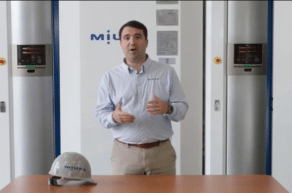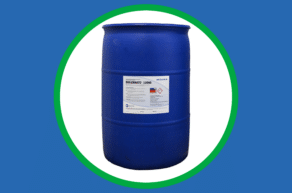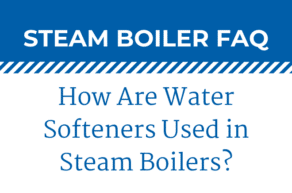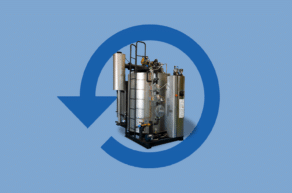Best Practices For Industrial Steam Boiler Maintenance
Industrial boiler maintenance is critical for ensuring the optimal efficiency and safety of your facility.
Because steam boiler and heating system problems typically occur over a long period of time, boiler preventative maintenance goes a long way in keeping your steam boiler in working order and avoiding failures or catastrophic malfunctions.
Miura’s water tube boiler systems are designed for maximum safety and equipped with advanced monitoring capabilities, but there’s still much you can do to get the most out of your investment. Let’s take a look at some boiler care and maintenance “best practices” to keep your Miura system running at its best.
Steam Boiler Maintenance Best Practices
1. Monitor Water Quality and Maintain Proper Water Treatment Processes
All Miura boilers are made out of carbon steel. While carbon steel is a very durable metal, the hot water temperature inside the boiler system must receive chemical treatment to prevent scaling and damage to the metal. Regular maintenance and chemical treatment of your boiler feedwater prevent non-condensable gases from getting inside the boiler and wreaking havoc through what is called “oxygen pitting.”
“Over time, the impurities in the city water that comes through your boiler can produce a hard scale,” explains Miura Rep Brandon Hargett of Boiler Masters, Inc.. “Hard scale is essentially a deposit buildup inside the boiler that latches onto the metal and tubes and reduces heat transfer. The reduction in heat transfer is what makes your efficiency go down and your fuel costs go up.”
To prevent this, we recommend using a water treatment solution such as BOILERMATE®, a silica-based product that controls corrosive ions in boiler water without adding harmful chemicals. Learn more about how Boilermate® water treatment works. We also recommend having a high-quality reverse osmosis system. Find out why Miura offers the best reverse osmosis systems for steam boilers.
2. Schedule Regular Steam Boiler Inspections
Boilers must be regularly inspected by law for safety, but doing so also helps you identify any weaknesses in your boiler’s heating system. Inspections can identify areas of corrosion (rusting of steel parts) as well as threats of insulation failure and tube failure caused by oxygen pitting.
Additional proper maintenance inspection points include the review of items like water level control, boiler pressure gauge, thermostat, safety valves, gaskets, etc.
3. Choose a Steam System with Advanced Boiler Monitoring
Smart monitoring and controls for your boiler is the key to ensuring there are no surprises during periodic boiler service inspections. Boilers should be monitored by trained maintenance personnel who know what to look for in a compromised boiler system. Of course, even the most trained eye can overlook a potential issue, which is why it helps to have the appropriate ancillary tools and systems for streamlining steam boiler maintenance, such as the BL Micro Controller Boiler Control System and the Colormetry Hardness Detection System.
And of course, every Miura boiler is equipped with the MOM System. Short for “Miura Online Maintenance,” MOM monitors the operation of each boiler in your boiler room, alerts your staff to potential malfunctions, and assists in diagnosing and troubleshooting any problems that may arise with boiler operation.
MOM is also capable of connecting with Miura’s own in-house engineering team, which allows for speedy, remote assistance with any boiler repair.
4. Choose a Boiler System with the Highest Safety Ratings
When choosing and working with industrial steam boilers, safety is always the top priority. Boilers are put through rigorous testing to guarantee that they will run safely for the duration of their lifecycle.
The American Society of Mechanical Engineers (ASME) has a Boiler & Pressure Vessel Code (BPVC) that sets the standard for how boilers and other types of pressure vessels must be designed and constructed. The Occupational Health and Safety Administration (OSHA) also has a set of regulations that help to ensure safety inside boiler rooms and steam plants.
Miura’s water tube design already puts you ahead of the safety game. Conventional fire tube boilers may never be completely fail-safe because of the amount of saturated water they use. Steam has a much higher volume than water — roughly 1,600 times larger.
If too many gallons of saturated water flashes into steam, the mass of the steam created exceeds what the boiler room can contain, resulting in an explosion. With Miura’s water tube boilers, such an explosion is virtually impossible because water tubes use roughly 10 percent of the water you might find inside a fire tube boiler at any given moment.
The water is also contained in circular tubes that are designed to withstand high amounts of pressure.
Miura boilers also come with a number of available safety measures to ensure that small problems don’t become big problems. If the operator attempts to bypass critical safety measures, the boiler simply will not start.
The MOM monitoring system also allows Miura reps to access data about a particular boiler remotely and in real-time. If there’s a problem, a Miura rep can troubleshoot with onsite staff to help resolve it without needing a mechanic to address the problem in person.
5. Pay Attention to the Boiler System Lifecycle
Even the safest and best-maintained steam boilers eventually wear out. The key is to know when to replace your boiler system before boiler failure occurs to reduce or eliminate downtime.
How do you know when it’s time to replace your boiler? The typical life cycle for a boiler is 15-25 years, and obviously the better you maintain it, the longer you can expect the boiler to last under normal conditions. However, if you begin to notice danger signs such as decreasing efficiency, loud noises, and rising costs of upkeep, it may be time to consider a replacement.
The right monitoring system, like our Miura Online Maintenance (MOM) system, can give you a strong indication when it’s time to replace your boiler. Miura’s monitoring system can help to troubleshoot any issues with the boiler and get it back running properly as soon as possible. It will also be able to detect a problem that’s serious enough for the boiler to be replaced.





